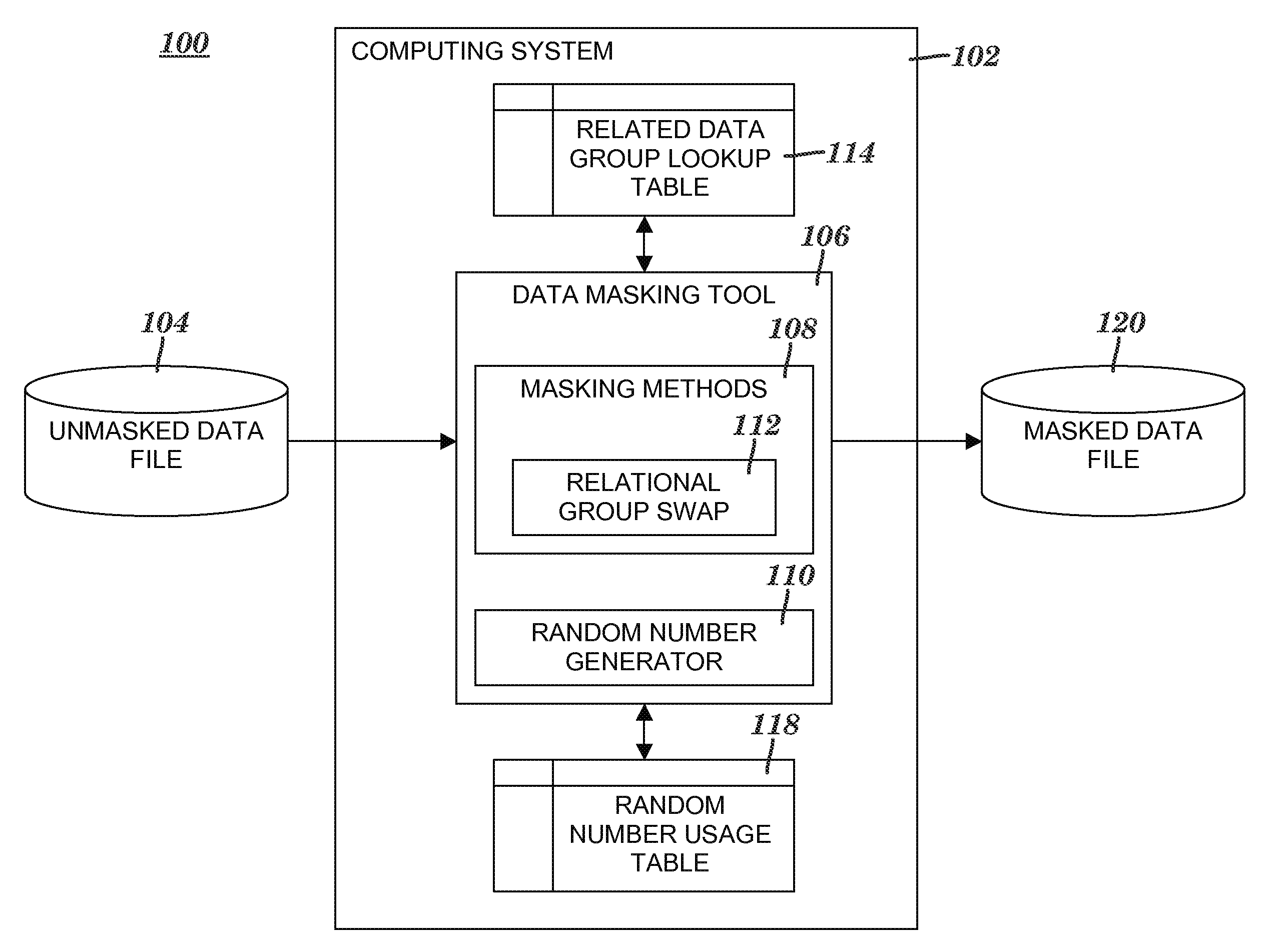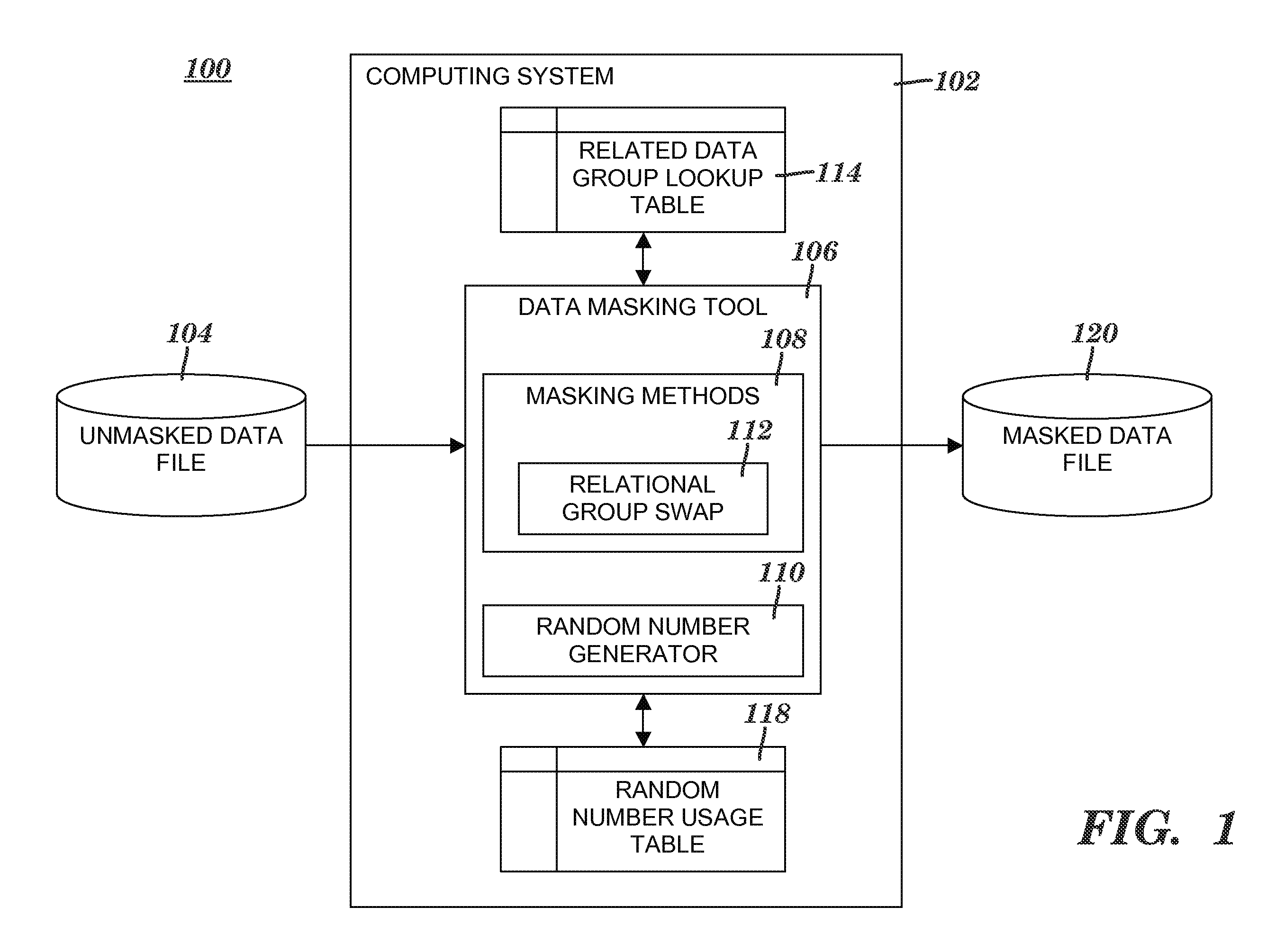Masking related sensitive data in groups
a sensitive data and data masking technology, applied in the field of computer-implemented methods and systems for masking data values, can solve the problems of application logic applied to the masked data value to fail, inaccurate processing, application logic inaccurate processing, etc., and achieve computationally fast and accurate processing of masked data
- Summary
- Abstract
- Description
- Claims
- Application Information
AI Technical Summary
Benefits of technology
Problems solved by technology
Method used
Image
Examples
example
[0039]FIGS. 4A-4E illustrate a process of masking nine sets of related data group values contained in nine records included in an unmasked data file. FIG. 4A depicts an exemplary unmasked data file 400 whose nine records are read in the processes of FIG. 2 and FIG. 3, in accordance with embodiments of the present invention. Unmasked data file 400 is an example of unmasked data file 104 (see FIG. 1). Each row of data in unmasked data file 400 is a record. The related data group included in unmasked data file 400 is the following group of data elements: Addr1, Addr2, City, County, State, Zip and Geographic code. Addr1 and Addr2 include data values associated with an address. The Addr1, Addr2, City, County, State and Zip data elements map to the Geographic code data element. Nine sets of related data group values 402 is the entire set of sensitive data values included in the related data group in unmasked data file 400. For example, the second set of data values of the related data gro...
PUM
 Login to View More
Login to View More Abstract
Description
Claims
Application Information
 Login to View More
Login to View More - R&D
- Intellectual Property
- Life Sciences
- Materials
- Tech Scout
- Unparalleled Data Quality
- Higher Quality Content
- 60% Fewer Hallucinations
Browse by: Latest US Patents, China's latest patents, Technical Efficacy Thesaurus, Application Domain, Technology Topic, Popular Technical Reports.
© 2025 PatSnap. All rights reserved.Legal|Privacy policy|Modern Slavery Act Transparency Statement|Sitemap|About US| Contact US: help@patsnap.com



